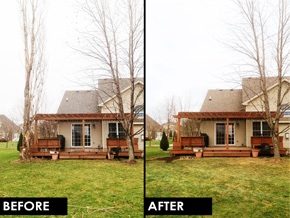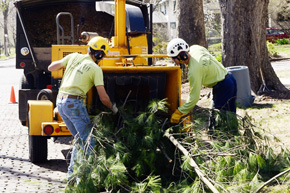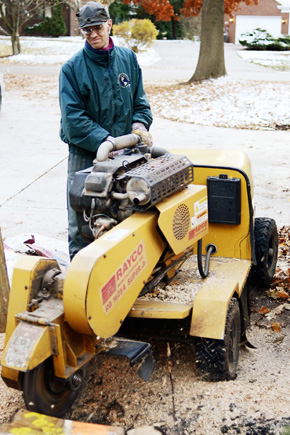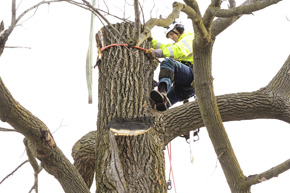Pruning
Pruning is the targeted removal of individual branches. It is a necessary part of proper tree maintenance and contributes directly to the health and longevity of a tree. Trees that are properly pruned are much better able to withstand storms and disease. For most trees, pruning can be performed at any time of the year. Some common types of pruning include:
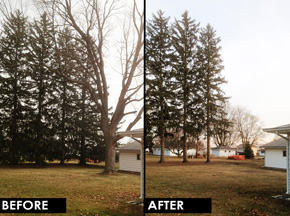
Maple and Spruce removed in Mansfield; remaining Spruce trees have crowns raised
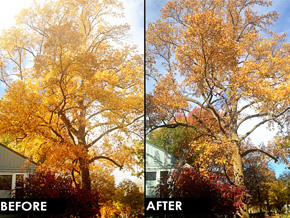
Crown Thinning performed on a Tulip Poplar in Champaign
Cleaning
Cleaning involves the removal of tree branches that are broken, diseased, dead, or that are poorly attached to the parent limb. Addressing these hazards makes the tree safer to be around while increasing the visual appeal and value of your landscape.
Raising
Raising the crown involves the removal of selected lower branches in order to provide clearance underneath the tree. This type of also encourages upward and outward growth of the crown, especially for younger trees.
Thinning/Reduction
Thinning is the process by which secondary branches are removed from the crown in order to allow more light and air to filter through. Thinning helps to maintain the shape of the tree and reduces its weight.
In crown reduction, the branches are pruned back in order to reduce the height and/or width of the tree. Reduction is particularly useful for trees that are too close to buildings or that compete with other trees. Reduction is not the same as topping. We are opposed to topping trees except in very rare circumstances.
Hedge trimming
Routine trimming is important to maintain the health and shape of your hedges. If allowed to become overgrown, hedges may require several successive trimmings in order to regain their aesthetic appeal.

